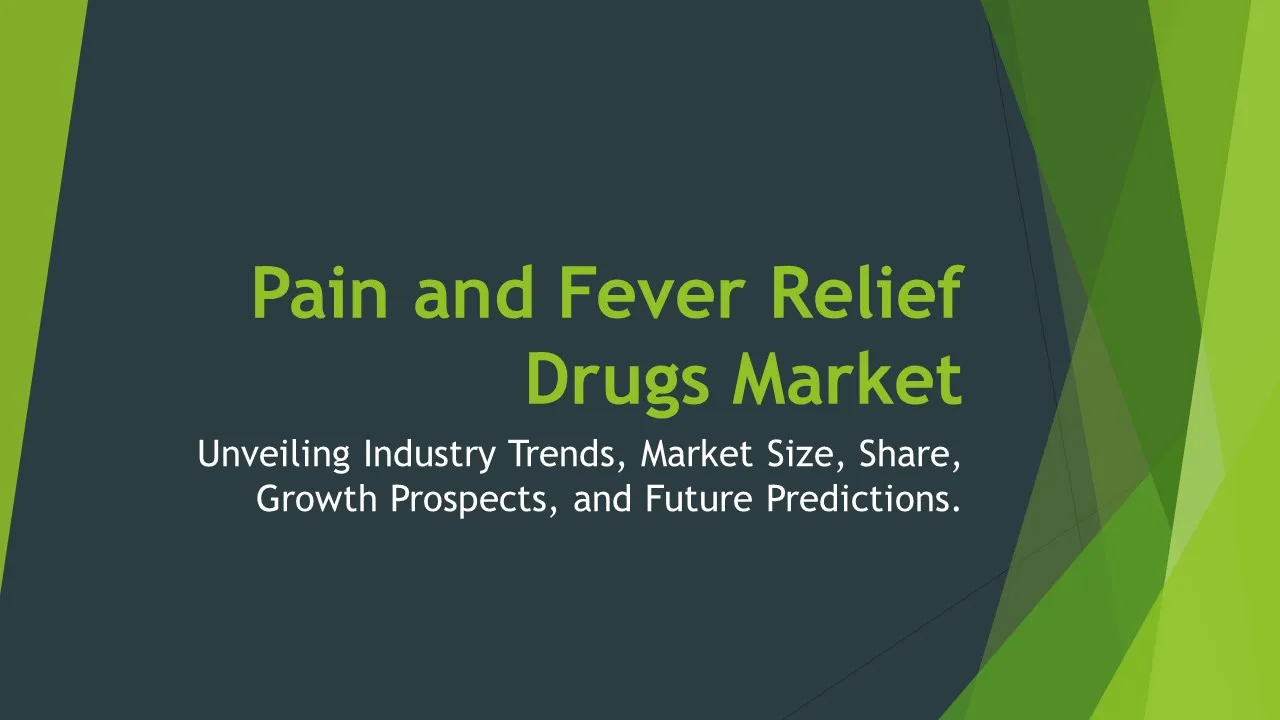Generic Sterile Injectable
Sterile Injectable Market Segments - by Product Type (Generic Antibiotics, Generic Antivirals, Generic Antifungals, Generic Hormones, Generic Vaccines), Application (Hospitals, Clinics, Ambulatory Surgical Centers, Homecare Settings), Distribution Channel (Hospital Pharmacies, Retail Pharmacies, Online Pharmacies), Ingredient Type (Vitamins, Minerals, Amino Acids, Electrolytes, Antioxidants), and Region (North America, Europe, Asia Pacific, Latin America, Middle East & Africa) - Global Industry Analysis, Growth, Share, Size, Trends, and Forecast 2025-2035
- Report Preview
- Table Of Content
- Segments
- Methodology
Generic Sterile Injectable Market Outlook
The global generic sterile injectable market is projected to reach USD 79.9 billion by 2035, growing at a CAGR of approximately 9.4% from 2025 to 2035. This impressive growth can be attributed to several factors including the rising prevalence of chronic diseases, increasing demand for cost-effective treatment options, and advancements in manufacturing technologies. Furthermore, the growing geriatric population which is more susceptible to various health conditions is expected to drive the demand for sterile injectables. The ability of these injectables to deliver drugs quickly and efficiently is also a significant growth factor in healthcare settings. Additionally, the increasing emphasis on biopharmaceuticals and the rising number of partnerships and collaborations among pharmaceutical companies are expected to contribute positively to the market growth.
Growth Factor of the Market
Several growth factors are propelling the generic sterile injectable market forward. First, the rising incidence of chronic diseases such as diabetes and cancer, which require effective medication administration, is driving demand for sterile injectables. Additionally, the cost-effectiveness of generic pharmaceuticals over branded drugs is making them increasingly appealing to healthcare providers and patients alike. The expansion of healthcare infrastructure, particularly in emerging economies, is also contributing to increased accessibility to injectable medications. Moreover, technological advancements in drug delivery systems, including prefilled syringes and auto-injectors, are improving the convenience and safety of sterile injectables, thus enhancing their adoption. Finally, the ongoing research and development initiatives aimed at creating novel drug formulations are further expected to fuel market growth.
Key Highlights of the Market
- The global market for generic sterile injectables is expected to see significant growth driven by increasing demand for cost-effective treatment options.
- Technological advancements in drug delivery systems are enhancing the safety and efficiency of sterile injectables.
- Growing chronic disease prevalence, particularly in the aging population, is a major driver of market demand.
- Emerging markets are witnessing increased access to healthcare, further boosting demand for injectable medications.
- The rise in partnerships among pharmaceutical companies for product development is likely to enhance market competitiveness.
By Product Type
Generic Antibiotics:
Generic antibiotics form a significant segment of the generic sterile injectable market, largely due to their essential role in treating bacterial infections. The increasing rates of antibiotic resistance have led to a surge in the demand for effective generic formulations that can provide alternative options for treatment. These injectables are preferred in hospital settings where rapid therapeutic action is required. Moreover, the rising prevalence of infections in both healthcare-associated and community settings has further amplified the need for these medications. As healthcare systems focus on cost-control measures, generic antibiotics are increasingly being recognized for their efficacy and affordability, leading to a stable growth trajectory in this segment.
Generic Antivirals:
The generic antivirals segment is rapidly gaining traction, particularly in the context of the ongoing battle against viral infections such as HIV, hepatitis, and more recently, COVID-19. The demand for effective antiviral therapies has propelled the development of generic options, making treatments more accessible to a wider population. Generic antivirals are also beneficial for patients who may struggle with the financial burden of brand-name drugs, thus fostering adherence to treatment regimens. In addition, the increasing prevalence of viral diseases across various demographics is contributing to the growth of this segment. Pharmaceutical companies are focusing on enhancing the formulation of sterile injectables to improve patient outcomes and compliance, which is expected to drive further growth.
Generic Antifungals:
The market for generic antifungals is bolstered by a rising incidence of fungal infections, especially in immunocompromised patients such as those undergoing chemotherapy or living with HIV/AIDS. These infections often require immediate treatment, facilitating the demand for effective generic antifungal sterile injectables. The efficacy and quick action of injectable antifungals make them a preferred choice in hospital settings, where rapid intervention is critical. Additionally, the growing awareness regarding fungal infections and their treatment options is expected to promote market growth. With the lack of awareness in rural and semi-urban areas, the introduction of educational programs could also enhance the adoption of generic antifungals.
Generic Hormones:
Generic hormones are another vital component of the generic sterile injectable market. They are increasingly used in hormone replacement therapy and various other medical conditions, including infertility. The demand for these products is influenced by an increase in hormonal disorders and the rising prevalence of conditions requiring hormonal treatments. The affordability of generic hormone therapies is also attracting patients moving away from branded counterparts. Furthermore, advancements in formulation technologies are enhancing the stability and delivery of these hormones, thereby improving patient compliance. The expanding awareness regarding reproductive and hormonal health is likely to contribute positively to the growth of this segment as more healthcare providers recommend these therapies.
Generic Vaccines:
The generic vaccines segment is poised for substantial growth, primarily driven by the increasing global focus on immunization programs. The rising incidence of vaccine-preventable diseases is propelling demand for effective vaccination options. Generic vaccines offer a cost-effective solution that is critical for developing countries where healthcare budgets are limited. The growing awareness about vaccination and its benefits is also contributing to this growth. Additionally, the ongoing research and development in vaccine technology aimed at creating more efficient formulations will likely enhance market attractiveness. The increasing collaboration between governments and pharmaceutical companies to boost vaccination rates further emphasizes the importance of generic vaccines in public health initiatives.
By Application
Hospitals:
Hospitals are the primary application area for generic sterile injectables, given the critical need for immediate patient care. The demand for injectable medications is high in hospitals due to their ability to deliver rapid therapeutic effects, which is essential in emergency situations. Additionally, hospitals utilize a wide range of generic injectable drugs across various departments such as oncology, infectious diseases, and anesthesiology. The increasing number of hospital admissions due to chronic diseases and the growing complexity of treatment protocols further boost the demand for these products. Furthermore, hospitals are increasingly focusing on cost-effective solutions, thereby opting for generic options, which are often more affordable than branded drugs.
Clinics:
Clinics also represent a significant application segment for generic sterile injectables. The prevalence of outpatient care is rising, and clinics are frequently the first point of contact for patients seeking medical attention. As such, clinics require a reliable supply of injectable medications for various conditions, including chronic diseases and acute infections. The convenience of clinic-based treatments allows for quick and efficient administration of injectables, ensuring better patient outcomes. Additionally, the rising trend of preventive healthcare and routine vaccinations in clinics is augmenting the demand for generic vaccines and other injectables. The growing focus on patient-centered care in outpatient settings is likely to enhance the adoption of generic sterile injectables in clinics.
Ambulatory Surgical Centers:
Ambulatory surgical centers (ASCs) are rapidly emerging as important venues for administering generic sterile injectables. These centers specialize in providing same-day surgical care, including pre-operative and post-operative injections. The increasing preference for outpatient surgeries over traditional inpatient procedures due to lower costs and reduced recovery time is driving the demand for injectable medications in ASCs. The convenience and quick turnaround associated with these centers make them ideal for administering a range of injectable formulations. Additionally, advancements in minimally invasive surgical techniques are contributing to the growth of ASCs, leading to increased demand for efficient pain management solutions, including generic anesthetics, which are often administered as sterile injectables.
Homecare Settings:
Homecare settings are gaining prominence in the generic sterile injectable market, driven by the increasing trend of patients receiving treatment at home rather than in hospitals or clinics. The convenience of home administration of injectable medications is becoming increasingly popular, particularly among elderly patients and those with chronic illnesses who require long-term therapy. Generic sterile injectables are often used for self-administration, which can significantly improve patient compliance and quality of life. The ongoing advancements in delivery devices, such as auto-injectors and prefilled syringes, are facilitating the safe and effective administration of injectables at home. Furthermore, the growing emphasis on reducing healthcare costs and hospital readmission rates is expected to drive the demand for homecare injectable solutions.
By Distribution Channel
Hospital Pharmacies:
Hospital pharmacies play a crucial role in the distribution of generic sterile injectables, serving as the primary source for hospitals and healthcare facilities. The reliance on hospital pharmacies is increasing due to their ability to provide customized medication solutions tailored to individual patient needs. Many hospitals have established dedicated pharmacy departments that focus on the procurement and management of sterile injectables, ensuring a steady supply of essential medications. The growing complexity of hospital treatment regimens necessitates efficient inventory management, which hospital pharmacies are well-equipped to handle. Additionally, the emphasis on patient safety and regulatory compliance in sterile drug preparation further enhances the importance of hospital pharmacies in the market.
Retail Pharmacies:
Retail pharmacies are also significant players in the distribution of generic sterile injectables, particularly in outpatient settings. With the increasing prevalence of chronic diseases, the demand for accessible medications at retail pharmacies is on the rise. Retail pharmacies offer convenience to patients seeking immediate access to injectable medications without the need for hospital visits. Moreover, the growing trend of self-administration of injectables has led to an increase in demand for products that can be dispensed at retail pharmacy outlets. The availability of pharmacists for consultations and guidance further enhances the appeal of retail pharmacies for patients requiring sterile injectables. Additionally, the development of strategic partnerships with pharmaceutical companies is expected to expand the range of available products in retail settings.
Online Pharmacies:
Online pharmacies are becoming an increasingly popular distribution channel for generic sterile injectables, especially in the wake of the COVID-19 pandemic, which has accelerated the adoption of telehealth and digital solutions. The convenience of ordering medications online has led to a surge in demand for sterile injectables delivered directly to patients' homes. Online pharmacies often provide a wide range of generic products, enabling patients to access cost-effective medications with ease. However, regulatory challenges and concerns regarding the authenticity of products pose significant hurdles for online pharmacies. Nonetheless, as technology continues to evolve, online pharmacies are expected to play an integral role in the distribution of sterile injectables, offering patients more options and improving medication adherence.
By Ingredient Type
Vitamins:
Vitamins are important ingredients in the formulation of certain generic sterile injectables, particularly those aimed at addressing deficiencies or promoting overall health. The demand for injectable vitamins is on the rise, driven by an increasing awareness of nutritional deficiencies and the benefits of vitamin supplementation. Injectable vitamins are particularly useful in clinical settings for patients who may have difficulty absorbing vitamins through oral administration. The ability of these injectables to provide immediate bioavailability is a significant advantage. Furthermore, the growing interest in preventive healthcare and wellness is expected to enhance the market for vitamin-based injectable formulations.
Minerals:
Minerals are another key ingredient type in the generic sterile injectable market, utilized primarily in formulations that address mineral deficiencies or support specific health conditions. The rising prevalence of conditions such as anemia and electrolyte imbalance has led to an increased demand for mineral-based injectables. These products are often administered in hospital settings where patients require immediate replenishment of vital minerals. Additionally, the growing awareness regarding the importance of minerals for overall health is propelling the adoption of these products in clinical and outpatient care. As healthcare providers continue to emphasize the need for comprehensive care, the market for mineral-based sterile injectables is expected to expand.
Amino Acids:
Amino acids are critical components of many generic sterile injectables, particularly those used in nutritional support therapies. The demand for amino acid injectables is rising as healthcare providers recognize their importance in maintaining patient health, especially in individuals with malnutrition or those undergoing surgery. These injectables are often used in parenteral nutrition to provide essential building blocks for tissue repair and immune function. The increasing prevalence of conditions that require amino acid supplementation, such as cancer and gastrointestinal disorders, is driving growth in this segment. Furthermore, advancements in formulation technologies that enhance the stability and efficacy of amino acid injectables are expected to further propel the market.
Electrolytes:
Electrolytes are crucial ingredients in various generic sterile injectables, particularly those aimed at correcting imbalances in the body. The need for electrolyte replenishment is common in clinical settings, especially for patients who are dehydrated or undergoing intensive medical treatments. The increasing incidence of conditions such as gastrointestinal disorders and renal failure has heightened the demand for electrolyte injectables. These products are essential for maintaining electrolyte balance and overall homeostasis in patients. As healthcare providers continue to prioritize the management of electrolyte imbalances, the market for electrolyte-based sterile injectables is expected to witness significant growth. Additionally, the rising awareness of the importance of electrolyte management in clinical care is likely to enhance this segment.
Antioxidants:
Antioxidants are becoming increasingly important in the formulation of generic sterile injectables, particularly due to their role in reducing oxidative stress and promoting cellular health. The growing awareness of the benefits of antioxidants in medical treatments has led to a rise in demand for these products. Antioxidant injectables are often utilized in therapeutic regimens aimed at improving patient outcomes and enhancing recovery processes, particularly in conditions characterized by oxidative stress. The expanding research on the health benefits of various antioxidants is also likely to drive market growth. As more healthcare providers recognize the importance of oxidative stress management in patient care, the demand for antioxidant-based sterile injectables is expected to rise.
By Region
The North American region holds a significant share of the generic sterile injectable market, primarily driven by the presence of advanced healthcare infrastructure and a high prevalence of chronic diseases. The United States, being a major contributor, is witnessing a surge in the adoption of generic sterile injectables due to their cost-effectiveness and the increasing emphasis on patient-centered care. The market in North America is projected to grow at a CAGR of approximately 9.1% from 2025 to 2035, fueled by technological advancements and a growing focus on biopharmaceuticals. Additionally, the increasing number of partnerships between pharmaceutical companies and healthcare providers is expected to further enhance the market landscape in this region.
In Europe, the generic sterile injectable market is also experiencing substantial growth, driven by similar factors as those in North America. The region is witnessing a rise in the aging population, which is more prone to chronic health conditions necessitating injectable treatments. Countries like Germany and the United Kingdom are leading the market due to their well-established healthcare systems and focus on patient welfare. The European market is characterized by stringent regulatory standards that ensure the safety and efficacy of injectable medications, further bolstering consumer confidence in generic options. This region is anticipated to grow significantly, contributing to the global market while maintaining a healthy competitive landscape among pharmaceutical companies.
Opportunities
The generic sterile injectable market presents numerous opportunities for growth amid evolving healthcare dynamics. One of the most significant opportunities lies in the expansion of healthcare access in emerging markets, where the demand for affordable and effective medication is escalating. As governments in these regions invest in healthcare infrastructure and public health initiatives, the market for generic sterile injectables is poised to grow. Pharmaceutical companies can capitalize on this opportunity by establishing manufacturing bases and distribution channels in emerging economies, ensuring that their products are readily available. Additionally, the growing trend of personalized medicine offers a unique opportunity for the development of tailored injectable therapies that meet the specific needs of individual patients, thereby enhancing overall treatment efficacy.
Another promising opportunity for the generic sterile injectable market is the increasing investment in research and development for new formulations and delivery systems. Innovations such as biodegradable injectables, long-acting formulations, and novel drug delivery systems are rapidly gaining traction in the industry. By focusing on R&D, pharmaceutical companies can develop advanced formulations that cater to unmet medical needs and improve patient compliance. Moreover, collaborations between academic institutions and pharmaceutical companies can enhance innovation in the field. The rise of telemedicine and digital health solutions also presents opportunities for improving patient education and adherence, thereby increasing the uptake of generic sterile injectables as a preferred treatment option.
Threats
The generic sterile injectable market faces several threats that could impact its growth trajectory. One of the primary threats is the increasing competition from branded pharmaceutical companies that continue to invest heavily in marketing and product differentiation. As branded companies develop new formulations and delivery methods that offer added benefits, they may overshadow the generic options, leading to potential market share loss for generic sterile injectables. Additionally, the growing prevalence of counterfeit drugs poses a significant threat to both patient safety and market integrity. The presence of counterfeit products can undermine public confidence in generic medications, leading to decreased sales and challenges in regulatory compliance. Furthermore, fluctuations in raw material prices and supply chain disruptions can impact the production and availability of generic sterile injectables, posing challenges to manufacturers.
Moreover, regulatory challenges and stringent quality control standards can act as restrainers to market growth. The process of obtaining regulatory approval for new generic sterile injectable formulations can be lengthy and costly, potentially discouraging new entrants. Existing companies may also find it challenging to comply with evolving regulations, leading to increased operational costs. Additionally, the need for continuous quality assurance and control can strain the resources of manufacturers. These regulatory complexities could impede the timely launch of new products in the market, ultimately affecting the growth potential of the generic sterile injectable sector. As the industry evolves, companies must remain agile to navigate these threats and maintain competitiveness in an increasingly challenging landscape.
Competitor Outlook
- Fresenius Kabi AG
- Baxter International Inc.
- Teva Pharmaceutical Industries Ltd.
- Hospira, Inc.
- Amgen Inc.
- Mylan N.V.
- Novartis AG
- Sanofi S.A.
- GSK plc (GlaxoSmithKline)
- Sandoz (a Novartis division)
- Par Pharmaceutical
- AstraZeneca PLC
- Merck & Co., Inc.
- Pfizer Inc.
- Hikma Pharmaceuticals PLC
The competitive landscape of the generic sterile injectable market is characterized by a mix of established players and emerging companies. Major manufacturers are focusing on expanding their product portfolios and entering into strategic partnerships to enhance their market presence. These companies are not only focusing on competing through price but also on improving the quality and efficacy of their injectable products. The competitive dynamics are further influenced by the increasing demand for advanced drug formulations, which necessitates substantial investments in research and development. Companies that can innovate and adapt to changing healthcare needs are likely to gain a significant competitive edge in the market.
Fresenius Kabi AG is one of the prominent players in the generic sterile injectable market, known for its extensive range of intravenous (IV) generic medications and specialty pharmaceuticals. The company has established a strong presence in Europe and North America, focusing on improving patient outcomes through high-quality products. Their robust supply chain management and commitment to patient safety have positioned them as a trusted provider in the market. Additionally, Fresenius Kabi continues to explore opportunities in emerging markets, aiming to enhance access to critical medications.
Baxter International Inc. is another major competitor that has made significant strides in the generic sterile injectable market. The company offers a variety of injectables that cater to diverse therapeutic areas, including oncology and anesthesia. Baxter's focus on innovation, particularly in developing prefilled syringes and IV solutions, has helped the company stay ahead in a competitive landscape. Furthermore, the company's strategic initiatives aimed at expanding its global footprint have contributed to its growth in both developed and emerging markets.
1 Appendix
- 1.1 List of Tables
- 1.2 List of Figures
2 Introduction
- 2.1 Market Definition
- 2.2 Scope of the Report
- 2.3 Study Assumptions
- 2.4 Base Currency & Forecast Periods
3 Market Dynamics
- 3.1 Market Growth Factors
- 3.2 Economic & Global Events
- 3.3 Innovation Trends
- 3.4 Supply Chain Analysis
4 Consumer Behavior
- 4.1 Market Trends
- 4.2 Pricing Analysis
- 4.3 Buyer Insights
5 Key Player Profiles
- 5.1 Amgen Inc.
- 5.1.1 Business Overview
- 5.1.2 Products & Services
- 5.1.3 Financials
- 5.1.4 Recent Developments
- 5.1.5 SWOT Analysis
- 5.2 Mylan N.V.
- 5.2.1 Business Overview
- 5.2.2 Products & Services
- 5.2.3 Financials
- 5.2.4 Recent Developments
- 5.2.5 SWOT Analysis
- 5.3 Novartis AG
- 5.3.1 Business Overview
- 5.3.2 Products & Services
- 5.3.3 Financials
- 5.3.4 Recent Developments
- 5.3.5 SWOT Analysis
- 5.4 Pfizer Inc.
- 5.4.1 Business Overview
- 5.4.2 Products & Services
- 5.4.3 Financials
- 5.4.4 Recent Developments
- 5.4.5 SWOT Analysis
- 5.5 Sanofi S.A.
- 5.5.1 Business Overview
- 5.5.2 Products & Services
- 5.5.3 Financials
- 5.5.4 Recent Developments
- 5.5.5 SWOT Analysis
- 5.6 Hospira, Inc.
- 5.6.1 Business Overview
- 5.6.2 Products & Services
- 5.6.3 Financials
- 5.6.4 Recent Developments
- 5.6.5 SWOT Analysis
- 5.7 AstraZeneca PLC
- 5.7.1 Business Overview
- 5.7.2 Products & Services
- 5.7.3 Financials
- 5.7.4 Recent Developments
- 5.7.5 SWOT Analysis
- 5.8 Fresenius Kabi AG
- 5.8.1 Business Overview
- 5.8.2 Products & Services
- 5.8.3 Financials
- 5.8.4 Recent Developments
- 5.8.5 SWOT Analysis
- 5.9 Merck & Co., Inc.
- 5.9.1 Business Overview
- 5.9.2 Products & Services
- 5.9.3 Financials
- 5.9.4 Recent Developments
- 5.9.5 SWOT Analysis
- 5.10 Par Pharmaceutical
- 5.10.1 Business Overview
- 5.10.2 Products & Services
- 5.10.3 Financials
- 5.10.4 Recent Developments
- 5.10.5 SWOT Analysis
- 5.11 Baxter International Inc.
- 5.11.1 Business Overview
- 5.11.2 Products & Services
- 5.11.3 Financials
- 5.11.4 Recent Developments
- 5.11.5 SWOT Analysis
- 5.12 GSK plc (GlaxoSmithKline)
- 5.12.1 Business Overview
- 5.12.2 Products & Services
- 5.12.3 Financials
- 5.12.4 Recent Developments
- 5.12.5 SWOT Analysis
- 5.13 Hikma Pharmaceuticals PLC
- 5.13.1 Business Overview
- 5.13.2 Products & Services
- 5.13.3 Financials
- 5.13.4 Recent Developments
- 5.13.5 SWOT Analysis
- 5.14 Sandoz (a Novartis division)
- 5.14.1 Business Overview
- 5.14.2 Products & Services
- 5.14.3 Financials
- 5.14.4 Recent Developments
- 5.14.5 SWOT Analysis
- 5.15 Teva Pharmaceutical Industries Ltd.
- 5.15.1 Business Overview
- 5.15.2 Products & Services
- 5.15.3 Financials
- 5.15.4 Recent Developments
- 5.15.5 SWOT Analysis
- 5.1 Amgen Inc.
6 Market Segmentation
- 6.1 Generic Sterile Injectable Market, By Application
- 6.1.1 Hospitals
- 6.1.2 Clinics
- 6.1.3 Ambulatory Surgical Centers
- 6.1.4 Homecare Settings
- 6.2 Generic Sterile Injectable Market, By Product Type
- 6.2.1 Generic Antibiotics
- 6.2.2 Generic Antivirals
- 6.2.3 Generic Antifungals
- 6.2.4 Generic Hormones
- 6.2.5 Generic Vaccines
- 6.3 Generic Sterile Injectable Market, By Ingredient Type
- 6.3.1 Vitamins
- 6.3.2 Minerals
- 6.3.3 Amino Acids
- 6.3.4 Electrolytes
- 6.3.5 Antioxidants
- 6.4 Generic Sterile Injectable Market, By Distribution Channel
- 6.4.1 Hospital Pharmacies
- 6.4.2 Retail Pharmacies
- 6.4.3 Online Pharmacies
- 6.1 Generic Sterile Injectable Market, By Application
7 Competitive Analysis
- 7.1 Key Player Comparison
- 7.2 Market Share Analysis
- 7.3 Investment Trends
- 7.4 SWOT Analysis
8 Research Methodology
- 8.1 Analysis Design
- 8.2 Research Phases
- 8.3 Study Timeline
9 Future Market Outlook
- 9.1 Growth Forecast
- 9.2 Market Evolution
10 Geographical Overview
- 10.1 Europe - Market Analysis
- 10.1.1 By Country
- 10.1.1.1 UK
- 10.1.1.2 France
- 10.1.1.3 Germany
- 10.1.1.4 Spain
- 10.1.1.5 Italy
- 10.1.1 By Country
- 10.2 Asia Pacific - Market Analysis
- 10.2.1 By Country
- 10.2.1.1 India
- 10.2.1.2 China
- 10.2.1.3 Japan
- 10.2.1.4 South Korea
- 10.2.1 By Country
- 10.3 Latin America - Market Analysis
- 10.3.1 By Country
- 10.3.1.1 Brazil
- 10.3.1.2 Argentina
- 10.3.1.3 Mexico
- 10.3.1 By Country
- 10.4 North America - Market Analysis
- 10.4.1 By Country
- 10.4.1.1 USA
- 10.4.1.2 Canada
- 10.4.1 By Country
- 10.5 Middle East & Africa - Market Analysis
- 10.5.1 By Country
- 10.5.1.1 Middle East
- 10.5.1.2 Africa
- 10.5.1 By Country
- 10.6 Generic Sterile Injectable Market by Region
- 10.1 Europe - Market Analysis
11 Global Economic Factors
- 11.1 Inflation Impact
- 11.2 Trade Policies
12 Technology & Innovation
- 12.1 Emerging Technologies
- 12.2 AI & Digital Trends
- 12.3 Patent Research
13 Investment & Market Growth
- 13.1 Funding Trends
- 13.2 Future Market Projections
14 Market Overview & Key Insights
- 14.1 Executive Summary
- 14.2 Key Trends
- 14.3 Market Challenges
- 14.4 Regulatory Landscape
Segments Analyzed in the Report
The global Generic Sterile Injectable market is categorized based on
By Product Type
- Generic Antibiotics
- Generic Antivirals
- Generic Antifungals
- Generic Hormones
- Generic Vaccines
By Application
- Hospitals
- Clinics
- Ambulatory Surgical Centers
- Homecare Settings
By Distribution Channel
- Hospital Pharmacies
- Retail Pharmacies
- Online Pharmacies
By Ingredient Type
- Vitamins
- Minerals
- Amino Acids
- Electrolytes
- Antioxidants
By Region
- North America
- Europe
- Asia Pacific
- Latin America
- Middle East & Africa
Key Players
- Fresenius Kabi AG
- Baxter International Inc.
- Teva Pharmaceutical Industries Ltd.
- Hospira, Inc.
- Amgen Inc.
- Mylan N.V.
- Novartis AG
- Sanofi S.A.
- GSK plc (GlaxoSmithKline)
- Sandoz (a Novartis division)
- Par Pharmaceutical
- AstraZeneca PLC
- Merck & Co., Inc.
- Pfizer Inc.
- Hikma Pharmaceuticals PLC
- Publish Date : Jan 21 ,2025
- Report ID : PH-65748
- No. Of Pages : 100
- Format : |
- Ratings : 4.5 (110 Reviews)









